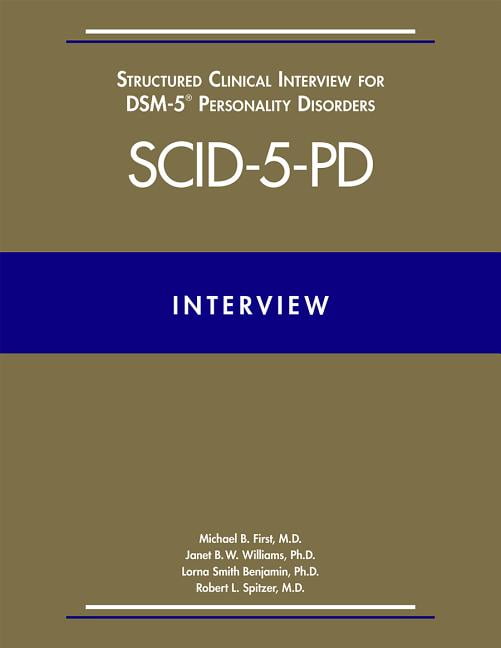

Patients may be asked various questions about their mental health to help reach a diagnosis. These interviews are used to investigate underlying etiologies and treatment effectiveness in clinical trials and academic research studies. Their design ranges from more open-ended, clinician-led interviews typically used to make a formal psychiatric diagnosis (e.g., The Structured Clinical Interview for DSM Disorders (SCID), to more quantitatively designed auxiliary questionnaires (e.g., The Patient Health Questionnaire (PHQ-9) that provide multidimensional assessments of symptom experience and severity to support diagnosis and treatment evaluation in clinical practice. The question content of these assessment tools is often based on classification systems that we have previously discussed, notably the DSM-5 and/or ICD, where pre-defined patterns of symptom criteria have been grouped together and designated as specific mental health disorders. Describe methods for clinical interviews and the mental status examinationĪcross clinical and research domains, mental health assessment and diagnosis are carried out using interviews and questionnaires that determine the presence, severity, frequency, and duration of a broad range of psychiatric symptoms.Archives of General Psychiatry, 52, 1025–1033. The reliability and validity of two structured diagnostic interviews for personality disorders. Journal of Personality Disorders, 25(6), 789-805. Attachment, borderline personality, and romantic relationship dysfunction. Hill, J., Stepp, S.D., Wan, M.W., Hope, H., Morse, J.Q., Steele, M., Steele, H., & Pilkonis, P.A. Washington, D.C.: American Psychiatric Press, Inc., Structured Clinical Interview for DSM-IV Axis II Personality Disorders, (SCID-II). Journal of Personality Disorders, 8(4), 307-319.įirst, MB., Gibbon M, Spitzer RL, Williams, JBW, & Benjamin LS. Validation of the wisconsin personality disorders inventory with the SCID-II and PDE. The intraclass correlation coefficient (ICCs) was. (From Hill et al., 2011): To determine inter-rater reliability, 20 cases were randomly selected and independently rated (blind to other information). The questionnaire was provided to the SO to fill out on their own, i.e. The questions were phrased to ask about the patient in the study (e.g. Informant SO Data was recorded from a paper-and-pencil questionnaire based on the SCID-II. As in the PDE, dimensional scores can be calculated by summing the ratings from each disorder scale, that is, adding together all subthreshold and threshold criteria scores from each individual item for each separate personality disorder.

For each Axis II disorder, a specified number of items have to receive a threshold rating in order to derive a probable or definite diagnosis. All positive answers are followed by requests for examples. Individual items or criteria are scored as: 0, absent 1, subthreshold or 2, threshold. The items are organized on a disorder by disorder basis. (From Barber & Morse, 1994): The SCID-II is a 113-item structured clinical interview for Axis II disorders. Interpersonal Functioning in Borderline Personality ("Interpersonal Functioning") For demographic information about the study participants, please refer to Background Information Questionnaire (BIQ) - Personality Studies ().ġ. This submission contains data and codebooks from several personality studies conducted 1990-2017, organized by assessment instrument. Microsoft Word (Interpersonal Functioning_SCIDII_codebook.docx)

Microsoft Word (Interpersonal Functioning_SCIDII-SO_codebook.docx)Īrchive (SPSS SAV) (Interpersonal Functioning_SCIDII.sav)
#Scid test psychology license#
Structured Clinical Interview for DSM-IV Axis II Personality Disorders (SCID-II) - Personality Studies.Īrchive (SPSS SAV) (Interpersonal Functioning_SCIDII-SO.sav)Īvailable under License Creative Commons Attribution No Derivatives.


 0 kommentar(er)
0 kommentar(er)
